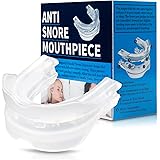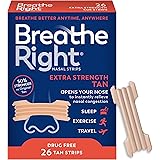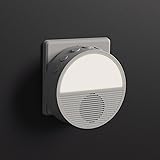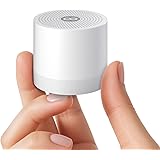Choosing the Best Backpacking Sleeping Pads for Unforgettable Backcountry Adventures
In the world of backcountry exploration, the quality of a night’s sleep can profoundly impact the success and enjoyment of an entire trip. Considering that a significant portion of an expedition is spent resting, a comfortable and warm sleeping pad is undeniably a critical piece of gear. As highlighted in the accompanying video, extensive testing involving over 60 different models and hundreds of nights spent in diverse backcountry conditions provides invaluable insights into what makes a superior backpacking sleeping pad. These rigorous evaluations, particularly those conducted in extreme environments like the Canadian Rockies where temperatures can plummet to -30 or even -40° Celsius, underscore the vital importance of reliability and warmth in insulation technology.
The quest for the ideal sleeping pad is often met with a bewildering array of choices, each promising unparalleled performance. Therefore, understanding the nuances of various features—from insulation type to baffle design and overall durability—becomes essential for making an informed decision. This guide, drawing upon comprehensive testing, aims to demystify the selection process, presenting award-winning options across several key categories. Whether an individual’s priority is maximum warmth for winter excursions, minimal weight for ultralight treks, or supreme comfort after a long day on the trail, a suitable option can be identified among these top contenders.
Conquering the Cold: The Warmest Backpacking Sleeping Pads
For those venturing into frigid environments, particularly where temperatures consistently fall below freezing, the primary concern is the R-value of a sleeping pad, which denotes its thermal resistance. As demonstrated by real-world testing in the Canadian Rockies, where conditions frequently reach bone-chilling lows of -30 to -40° Celsius, reliability in warmth is paramount. While numerous pads have recently entered the market aiming to compete in the winter camping segment, one model has consistently proven its mettle against extreme cold.
The Award Winner: Thermarest Xtherm
The Thermarest Xtherm is recognized as the benchmark for warmth, having reliably performed at temperatures below -20° Celsius where other pads struggle. Its exceptional insulation capabilities are primarily attributed to its unique triangular core matrix construction. This innovative design creates numerous small, insulated air pockets within the pad, significantly enhancing its effective warmth and maximizing the efficiency of its reflective insulation technology. Consequently, convective heat loss, a major factor in heat dissipation, is effectively mitigated, allowing users to maintain body heat even in severe cold.
However, the Xtherm’s design, which employs horizontal baffles, may present a comfort challenge for some, particularly side sleepers. In such cases, arms can go numb, affecting sleep quality. Nevertheless, for back sleepers or those who prioritize warmth above all else in winter conditions, this drawback is often considered minor. The Xtherm’s proven track record in the harshest conditions solidifies its position as the ultimate choice for extreme cold backpacking.
Warm Alternative: Sea to Summit Ether Light XR Pro
An excellent alternative for those seeking robust warmth with slightly improved comfort is the Sea to Summit Ether Light XR Pro. This pad boasts an impressive R-value exceeding seven, indicating strong insulating properties suitable for cold conditions. While it is generally perceived as more comfortable than the Xtherm due to its design, its warmth performance reaches its practical limit around -20° Celsius. Therefore, for truly extreme cold, the Xtherm is typically the preferred choice, but the Ether Light XR Pro remains a highly capable option for milder winter or shoulder-season camping.
Smart Spending: The Best Budget Backpacking Sleeping Pad
Accessibility to quality gear should not be contingent on a hefty price tag. For many backpackers, especially those just starting out or managing their gear investments carefully, finding a budget-friendly sleeping pad that still offers dependable performance is a key objective. The priority in this category is identifying a pad that provides a solid all-around experience—comfort, warmth, and reasonable weight—without exceeding a specific price point, typically under $100.
The Award Winner: Naturehike NKTR 5.8 Sleeping Pad
The Naturehike NKTR 5.8 sleeping pad excels in delivering exceptional value, meeting the criteria for an effective, affordable option. It typically costs under $100, making it an attractive choice for those with financial constraints. Its dimpled baffling system contributes to a relatively comfortable sleeping surface, distinguishing it from many other budget pads. Furthermore, the NKTR 5.8 offers commendable warmth, performing effectively at temperatures just below freezing and warmer, making it suitable for three-season use. Its weight is also quite favorable for a budget option, aligning closely with lighter pads on the market.
It is important to acknowledge a couple of considerations with the Naturehike NKTR 5.8. Reliability data is somewhat limited compared to more established brands, as it is a newer entrant. While individual experiences may be positive, a broader pool of long-term user reviews is often needed to fully assess its durability. Additionally, its thickness, while comparable to many pads, might be perceived as slightly thin by some users who prefer a more substantial sleeping platform for enhanced comfort.
Shedding Weight: Best Ultralight Backpacking Sleeping Pads
For backpackers who meticulously weigh every item to minimize pack burden, an ultralight sleeping pad is indispensable. However, the pursuit of extreme lightness often comes with compromises in comfort or warmth. The goal in this category is to find a pad that significantly reduces weight without unduly sacrificing these crucial attributes, offering a balanced performance for hikers who prioritize efficiency on the trail.
The Award Winner: Nemo Tensor All-Season
The Nemo Tensor All-Season represents a significant advancement in ultralight sleeping pad technology, delivering a remarkable balance of low weight, comfort, and warmth. While initial impressions may suggest subtle changes from previous generations, strategic enhancements have led to substantial improvements. A slight increase in thickness contributes significantly to improved comfort, enabling users to slightly decrease inflation levels for a softer feel. The warmth rating has also been elevated, broadening its usability across different seasons. Moreover, the updated top material provides a more comfortable texture, further enhancing the sleep experience.
Despite these improvements, it should be noted that the Nemo Tensor All-Season, while comfortable for its weight class, may not achieve the same level of plushness as some heavier, comfort-focused pads. This trade-off is often inherent in ultralight designs. Ultimately, for backpackers aiming to reduce pack weight without a severe compromise on essential sleeping qualities, the Tensor All-Season stands out as a top-tier choice.
Ultralight Alternative: Thermarest XLite NXT
The Thermarest XLite NXT has historically been a favorite among through-hikers and ultralight enthusiasts, primarily due to its industry-leading warmth-to-weight ratio. This pad is considerably lighter than the Tensor All-Season, making it an attractive option for those seeking the absolute minimum weight. However, this weight reduction often comes at the cost of comfort; many users find the XLite NXT to be noticeably less comfortable compared to the Tensor All-Season. Therefore, the choice between these two exceptional ultralight pads often hinges on the individual’s specific balance point between weight savings and perceived comfort.
The Absolute Minimum: Best Super Ultralight Pad
For the most gram-conscious backpackers, the super ultralight category represents the pinnacle of weight reduction. Here, the objective is to achieve the lightest possible weight for a sleeping pad, while still maintaining a standard size and sufficient warmth for typical three-season conditions. Sacrifices are accepted in this category, but not at the expense of a functional, albeit minimalist, sleep system.
The Award Winner: Nemo Tensor Elite
The Nemo Tensor Elite has redefined expectations for super ultralight sleeping pads, astonishing testers with its unexpected combination of comfort and warmth at an exceptionally low weight. As one of the lightest full-sized pads ever created, its minimal mass belies its performance. Users have reported surprisingly comfortable sleep, partly attributed to the stretchy nature of its top material. Moreover, it has demonstrated an impressive warmth capability, keeping users comfortable down to 5° Celsius, an unexpected feat given its inherently low R-value. Therefore, for those prioritizing extreme lightness without completely abandoning warmth and a reasonable degree of comfort, the Tensor Elite is an unparalleled option.
A crucial consideration for the Tensor Elite is its perceived fragility. While long-term reliability data is still being gathered, its lightweight construction suggests that users must exercise extreme care. It is highly recommended that this pad be deployed within a tent and that contact with sharp objects be meticulously avoided. Since the discontinuation of the Thermarest UberLite, the Tensor Elite effectively stands alone in the super ultralight category, solidifying its position for adventurers whose priority is the absolute lightest possible pack.
Restful Nights: The Most Comfortable Backpacking Sleeping Pad
For many backpackers, comfort is not a luxury but a necessity, particularly after arduous days on the trail. The most comfortable sleeping pads are engineered to deliver superior pressure relief, excellent stability, and adequate warmth, all contributing to a truly restorative night’s sleep. The focus is on innovative design features that cradle the body and minimize discomfort.
The Award Winner: Thermarest NeoLoft
The Thermarest NeoLoft stands out as the epitome of comfort in backpacking sleeping pads, primarily due to its combination of a super stretchy top material and substantial thickness. Extensive testing has revealed that a stretchy top material is a dominant factor in providing pressure relief, often proving more impactful than the specific baffling system of a pad. This allows the NeoLoft, even with its horizontal baffles, to deliver a remarkably comfortable experience, in some cases surpassing pads with dimpled baffling systems like the REI Helix and EtherLight XR.
The NeoLoft further enhances comfort through its generous thickness, measuring 4.6 inches. This ample loft is particularly beneficial for larger individuals who might otherwise “bottom out” thinner pads, ensuring consistent cushioning. Despite its significant size and comfort, the NeoLoft maintains a relatively lightweight and compact profile, making it a viable option for those who prioritize sleep quality. While it is not considered an ultralight pad, and some users might find its bouncy feel a bit “balloon-y,” its ability to deliver deep, comfortable sleep is undeniable.
Comfortable Alternative: REI Helix
The REI Helix offers a compelling alternative for comfort-focused backpackers, especially when fully inflated. While it is not as thick as the NeoLoft, its dimpled baffling system provides excellent support and pressure distribution. Many users report exceptionally good nights of sleep on the REI Helix, often ranking it among their top recommendations for comfort. Therefore, if a slightly thinner profile is acceptable, the Helix provides a highly comfortable sleeping solution that consistently delivers a restful experience in the backcountry.
The Versatile Performer: Best All-Around Sleeping Pad
An all-around sleeping pad is designed to excel across multiple performance metrics—warmth, comfort, weight, and price—without making significant compromises in any single area. This category caters to backpackers who desire a highly versatile pad capable of performing reliably in a wide range of conditions, offering a balanced solution for various adventures.
The Award Winner: Exped Ultra 5R
The Exped Ultra 5R is widely recognized as the best all-around backpacking sleeping pad, offering an impressive blend of warmth, comfort, and reasonable weight. Its exceptional warmth-to-weight ratio makes it particularly appealing for diverse conditions. The pad features a soft, stretchy top material combined with vertical baffles, a configuration often found to be more comfortable for side sleepers compared to traditional horizontal baffles. Moreover, its price point is considered quite fair given its comprehensive performance capabilities, requiring minimal compromise for the discerning backpacker. For those seeking a slightly lighter option with less warmth, the Exped Ultra 3R is also an excellent choice within this versatile line.
While the Exped Ultra 5R is highly proficient across the board, it is important to note that it may not be the absolute master of any single category. For instance, individuals with extreme preferences for ultralight gear, maximum comfort, or absolute warmth might find a specialized pad more suited to their specific needs. However, for the vast majority of backpackers seeking a reliable, high-performing, and balanced sleeping solution for diverse trips, the Ultra 5R consistently delivers outstanding results. Its ability to competently handle varied environments and user preferences establishes it as a true all-rounder in the backpacking sleeping pad market.
All-Around Alternative: Sea to Summit EtherLight XR
The Sea to Summit EtherLight XR presents another strong contender for the best all-around sleeping pad. While it may not offer the same level of warmth as the Ultra 5R, it is often considered to be slightly more comfortable for some users and boasts a lighter weight profile. Its ease of use also contributes to its appeal as a versatile option. This pad provides a well-balanced performance, making it a suitable choice for backpackers seeking a reliable and comfortable all-purpose sleeping solution that doesn’t lean too heavily into extreme specialization.
Pushing Boundaries: The Most Innovative Sleeping Pad
Innovation in backpacking gear is crucial for enhancing the outdoor experience, offering new solutions to long-standing challenges. The most innovative sleeping pads are those that introduce novel concepts, integrate advanced technologies, or significantly improve upon existing designs, setting new standards for performance and user experience. These pads often redefine what is possible in terms of comfort, warmth, and weight.
The Award Winner: Thermarest NeoLoft
The Thermarest NeoLoft is also lauded for its groundbreaking innovation, showcasing several pioneering advancements in sleeping pad technology. Thermarest successfully integrated its proven triangular core matrix and Thermacapture technology within a remarkably thick pad through a revolutionary 3D construction. Unlike many traditional pads that appear as two fabric pieces fused at the edges, the NeoLoft features distinct side walls, allowing for its impressive thickness and maximizing effective surface area. This innovative structure enhances both comfort and insulation efficiency.
Furthermore, the NeoLoft has set a new benchmark for the stretchiness of top materials. This highly elastic fabric is a key factor in its superior pressure relief and overall comfort, distinguishing it from almost all other pads on the market. The successful combination of a robust, insulated core with a uniquely stretchy and thick design, all while maintaining a manageable weight, represents a significant leap forward in sleeping pad engineering. This bold approach by Thermarest has resulted in a pad that is not only exceptionally comfortable and warm but also a testament to forward-thinking design in the realm of backpacking sleeping pads.








